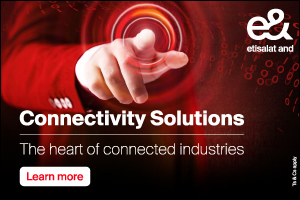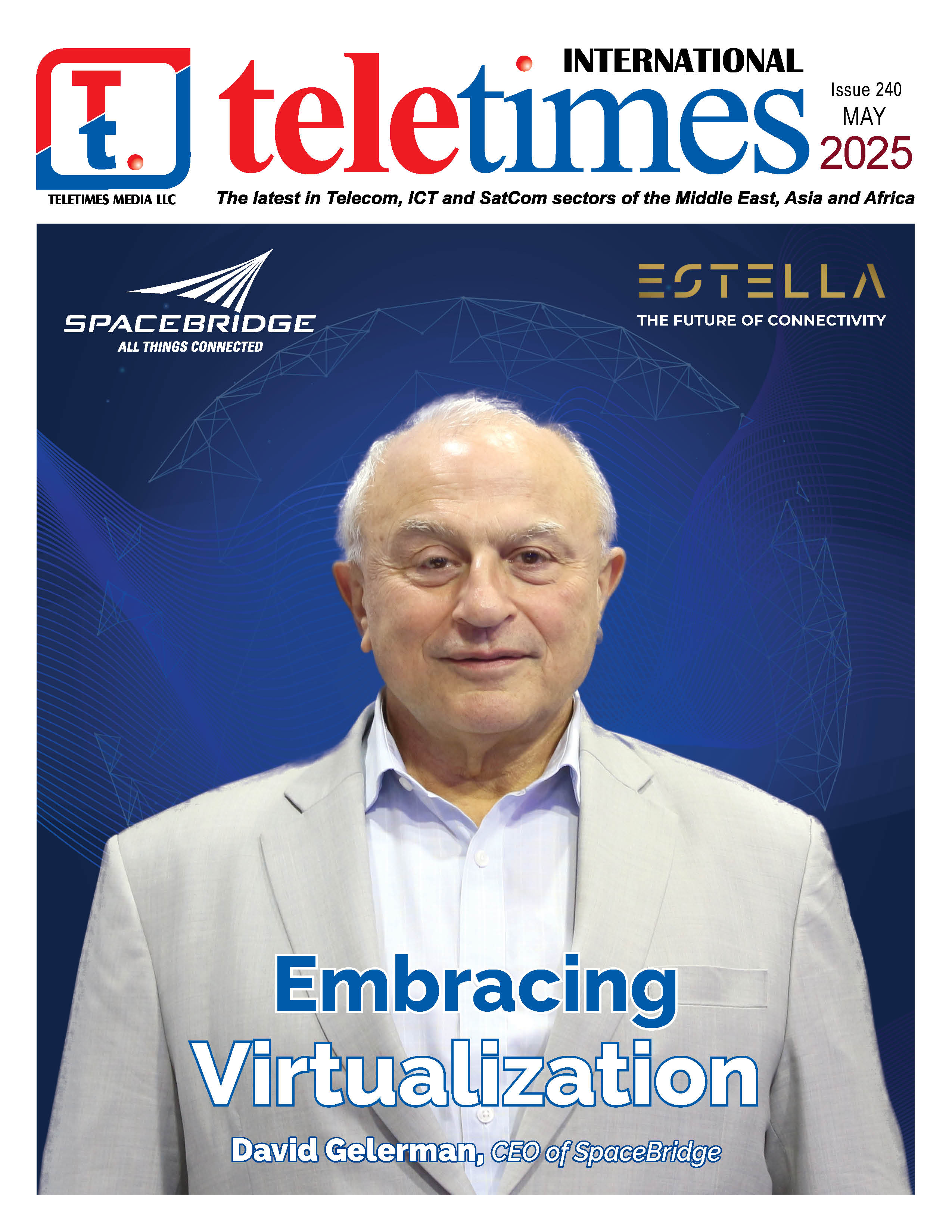Cynthia Harty, SVP Corporate Development, ST Engineering iDirect, on Hybrid Cloud Networks and the Future of Connectivity
Cynthia Harty is Sr. Vice President, Corporate Strategy, ST Engineering iDirect, where she
leads the Corporate Development team that will focus on our standards-based innovation,
strengthening relationships within our satellite community, and expanding our presence in the
broader telecommunications ecosystem. Her deep understanding of our market and customers
allows her to proactively identify, research, and foster partnership activities.
In her 23 years with ST Engineering iDirect, Harty has held multiple leadership roles across
sales, strategy and business development, contributing to the company’s growth and different
go-to-market strategies.
Prior to joining ST Engineering iDirect, Harty held leadership roles at Baan Company, Xerox
Computer Services, and Wang Laboratories.
Teletimes: How does ST Engineering iDirect differentiate itself from competitors in the rapidly evolving satcom industry, especially with the rise of new constellations and industry consolidation?
Cynthia Harty: I think what truly sets us apart is the flexibility we offer to our customers through our solutions, and this adaptability comes in various forms. Take Intuition, for example, our next-generation ground system which we introduced in March 2024. It’s designed to address the changing demands of our customers, who are now asking for things they wouldn’t have considered three or five years ago.
One of the key areas this flexibility shows is in the system itself. Customers are increasingly looking for choices in how they deploy their ground networks, and we’re committed to providing them with strategies that meet their unique needs and goals. This ability to tailor solutions is a big part of how we help them succeed in a fast-evolving industry.
Historically, everybody deployed a ground segment solution on-premise, and everybody had purpose-built hardware.
Now, what customers are asking for is not only the ability to deploy on-premise with purpose built hardware, but also the option to run some of the network functions in the cloud. Maybe it’s a private cloud, maybe it’s a public cloud. We’ve also had the request: instead of running it on purpose-built equipment, can we run it on commercial off-the-shelf equipment, whether it’s a Dell or an HP server?
With Intuition, the largest fundamental change we made is that we have virtualized all of the network functions, enabling them to run in a hybrid model. So, if you want to run the network management system in the public cloud, you can. You can run network processing on purpose-built hardware or baseband processing on COTS.
“With Intuition, the largest fundamental change we made is that we have virtualized all of the network functions, enabling them to run in a hybrid model”
You might ask, why would someone even want to do that? It all depends on who their end user is and the use cases they are supporting. Having that flexibility of deployment options is probably one of the greatest changes in the last five years in our industry.
Customers are increasingly seeking the ability to license only the specific software applications or capabilities they need, and we anticipate this demand will shape how we tailor our offerings to meet their future requirements.
TT: How do these factors impact the cost of entry?
Cynthia: The third change in our industry — and this does get to lower cost of entry — is that customers no longer necessarily want a perpetual license or a CapEx acquisition method. They want an OpEx model — subscription-based. Customers want that subscription tied to accessing new capabilities and usage criteria, which can vary depending on whether the service offering is targeted to defense, maritime, etc.use cases.
This aligns perfectly with Intuition Unbound, our innovative solution that enables access to tailored capabilities through a flexible, consumption-based subscription approach.
The fourth change is that customers increasingly turn to us, as the technology supplier, to take care of all the backend operational support so they can focus on offering an optimized managed service to their end users. They often ask us: can you help configure the system, advise us on network KPIs, can you proactively monitor the network? Customers want to focus on their core competency of delivering their managed service, not manage ground segment infrastructure.
TT: Are these changes similar across both telecom and satellite spaces?
Cynthia: I think most of them are driven by the disruption in the satellite space. With Starlink entering our market, there’s good and bad.
The good: they have absolutely expanded the addressable market by offering a lower priced terminal and service plans for satcom connectivity.
The bad: they introduced low-priced terminals that aren’t practical for every B2B use case. For example, a ~$500 terminal may not be suitable for a defense use case focused on command and control purposes.
Still, Starlink’s market entry has forced all operators and service providers (regardless of orbit utilized) to rethink competitiveness, and that flows down to us as their ground segment providers. We help them address competitiveness by offering flexible deployment, subscription models, and modular licensing — so they can start small and grow, focusing on delivering managed services while we, as the ground system experts, manage the backend operational support.
TT: Based on these changes, what technological advancements are you focusing on for the next 3–5 years?
Cynthia: We’ve tackled virtualization and cloudification; bifurcating the system into virtual network functions and providing hybrid deployment options is currently in market with Intuition.
Now, we are turning our attention to automation, machine learning (ML) and AI, to improve the troubleshooting and monitoring of an iDirect network; and 5G NTN with 5G NR support, and shortly thereafter, 6G. These are the next big technological priorities for iDirect next three to five years.
TT: Before moving on, let’s dive a little deeper into AI and ML. What kind of applications are you deploying in that space?
Cynthia: With Intuition there will be a series of applications we will bring to market. These tools and user interface will provide much deeper network analytics, recommendations and insights to our customers.
Our new AI-based automation tools are designed to enhance troubleshooting and anomaly detection. The initial use cases focus on identifying issues like phase noise, rain fade, and cloud cover, isolating them, and running predictive analysis to anticipate future occurrences. With each event, these tools refine predictive models, enabling more proactive interventions and making predictive maintenance increasingly automatic
The possible applications are limitless. For example, we’re using a virtual assistant to commission new terminals: traditionally, a network technician may go through 4–6 steps manually. Now, the virtual assistant will prompt the network technician through a series of question equating to provisioning criteria and the terminal comes into network. The benefit our customers result in faster time to revenue and a higher end user experience.
When evaluating AI/ML use cases, we ask two questions:
1. Are we enabling our customers to introduce new services or expand upon existing services faster?
2. Are we lowering their cost of delivery?
If the answer to either is “yes,” it’s worth exploring and providing as part of Intuition.
TT: How is ST Engineering iDirect ensuring that satellite technology remains an integral part of the global 5G ecosystem?
Cynthia: At ST Engineering iDirect, we have been deeply committed to embedding satcom nuances within the 5G architecture by aligning closely with 3GPP standards and pioneering new ground segment innovations. Through initiatives like SaT5G, Satis5, and OSMOSIS, and collaborations with partners such as Hellas Sat and the European Space Agency, we have successfully demonstrated live satellite integration into 5G networks — including capabilities like network slicing, SDN/NFV orchestration, and edge computing. Our focus on virtualization, cloudification, and open API-based orchestration ensures that satellite becomes a seamless component of multi-radio networks, supporting everything from IoT and enterprise broadband to mission-critical applications. With the convergence of terrestrial and non-terrestrial networks now a reality, satellite is no longer complementary — it is essential for delivering the full promise of 5G connectivity everywhere.
“Through initiatives like SaT5G, Satis5, and OSMOSIS, and collaborations with partners such as Hellas Sat and the European Space Agency, we have successfully demonstrated live satellite integration into 5G networks”
TT: How do you see the NTN space developing, and how will it affect telecom?
Cynthia: We believe both satcom and telecom will benefit. For satcom, we finally move out of a niche and interoperate with terrestrial networks. Many of our customers already operate both TN and NTN, but right now, roaming between them is not possible in a meaningful way.
With 3GPP Release 19 onward, it will become seamless. 5G NTN is still with the early adopters — many are evaluating, few are implementing yet at scale. Some of that is due to standards not being finalized, and some is due to the chipset ecosystem readiness. Few chipsets today support 5G NTN (Release 18), and we’re waiting to see who leads the way on Releases 19 and 20. But it’s happening – just a matter of time.
TT: How is ST Engineering iDirect positioned when it comes to NTN?
Cynthia: We are actively engaged with 3GPP to fully support 5G NTN on our roadmap. We’re now running a series of proof of concepts that will involve support for non-3GPP devices to 3GPP devices and roaming between terrestrial networks and non-terrestrial networks.
One of the ways customers can consume these capabilities is by leveraging our Intuition Unbound service offering (mentioned previously). In our Unbound Capabilities subscription model, customers can simply add the 5G NTN package when the capability is needed. Additionally, iDirect handles all the backend technology refresh and obsolescence of hardware for the network. Customers can easily consume new capabilities as their service offerings expand in a consumption-based model that matches investment with revenue generation.
TT: Which geographical markets do you think will be most promising, especially for NTN?
Cynthia: Interesting — I haven’t thought of it geographically. I think in verticals or market segments. For example, commercial aero (aviation) will be heavily impacted — gate-to-gate connectivity will finally be achievable; roaming seamlessly from TN to NTN and back to TN throughout the flight. Aero end users (airlines) are pushing us and our network operators and service providers the fastest. Another important and high growth market segment will be land mobility — connected X (cars, buses, rail etc.) are an underserved market.
TT: Last question — which industry segment or issue could best use attention from the regulatory side right now?
Cynthia: Not so much for us as a ground segment provider to market, but more so for our customers (satellite operators and service providers); with Starlink, Kuiper, and Telesat Lightspeed deploying so many satellites, there are real concerns about orbital congestion and interference.
Just like air traffic can get shut down after an incident (like the Starship explosion last week), satellite collisions could have catastrophic impacts.
LEO growth is significant, and regulations must evolve to manage it properly. It’s more of a problem for our customers than for us — but it affects the entire ecosystem.












